Local list of heritage assets – criteria
A ‘Local List’ is a list of ‘non-designated heritage assets’. Non-designated heritage assets are ‘buildings, monuments, sites, places, areas or landscapes identified by local planning authorities as having a degree of significance meriting consideration in planning decisions, but which are not formally designated’. These contrast with nationally designated heritage assets (such as listed buildings or scheduled monuments). Heritage assets on the Local List need not be less significant than designated assets; they may have important local significance.
Coventry City Council has maintained a Local List of Buildings of Special Architectural or Historic Interest since (at least) June 1974. The Local List has changed over time, and now over 280 heritage assets are recorded on the Local List.
Creating a Local List is a way for local councils and communities to identify and celebrate historic buildings, archaeological sites and designed landscapes which enrich and enliven their area.
These criteria set out how a heritage asset is considered for inclusion in the Local List. The public, councillors and local interest groups have been consulted on these criteria, and they have been approved by the City Council.
What inclusion on the Local List means
Local listing is intended to highlight heritage assets that are of local heritage interest in order to ensure that they are given due consideration when change is being proposed. Inclusion of a building or place on the Local List places no additional legal requirements or
responsibilities on property owners over and above those already required for planning permission or building regulation approval.
It can, however, help to influence planning decisions in a way that conserves and enhances local character. Under the National Planning Policy Framework the conservation and contribution of locally listed heritage assets will be a material consideration in planning decisions that directly affect them or their setting.
Criteria
The heritage asset be valued locally for some or all of the following:
- Non-designated heritage assets
- The heritage asset must meet the following criteria:
- lt must be capable of being a heritage asset within the government’s definition
- lt must have heritage interest that can be conserved and enjoyed
- lt must have value as heritage for the character and identity of the area for its heritage interest beyond personal or family connections
- Its significance must be greater than the general positive value of its surroundings
- Historic: It is important to understanding an association with a person, event, episode of history, or local industry. This might be an illustrative interest (it illustrates an aspect of the area’s past that makes an important contribution to its identity or character), or an associative interest (it connects us to people and events that shaped the identity or character of the area).
- Artistic: It makes an important contribution to the positive look of the area either by design or fortuitously. This might include artistic interest or architectural interest.
- Community: It is important to the identity, cohesion, spiritual life or memory of all or part of the community. This might include commemorative or symbolic interest, that reflects meanings of a place for the people who relate to it.
- Evidence: It is an important resource for understanding and learning about the area’s history. This might include archaeological interest. The importance of the asset is then assessed, including a consideration of its specialness. The specialness is what makes the heritage significance of the asset stand out above the surrounding environment. The following would be considered:
- Age: Is it particularly old, or of a date that is significant to the local area?
- Rarity: Is it unusual in the area or a rare survival of something that was once common?
- Integrity: Is it largely complete or in a near to original condition?
- Group value: Is it part of a group that has a close historic, aesthetic or communal association?
- Coventry’s identity: Is it important to the identity or character of the city or a particular part of it?
The distinctive historic elements of Coventry’s identity that may be considered:
- The surviving buildings, defences and street plan of the medieval city centre and its suburbs;
- The surviving pre-industrial settlements and landscape features which have been subsumed by the expansion of the city such as Walsgrave, Canley, Binley, Brownshill Green, Coundon Green, Little Heath (Spring Road), Stivichall Croft and Lower Eastern Green (at Dial House Lane);
- The wider Arden rural environment on the fringe of the city comprising field-systems, ancient woodlands and commons which developed over centuries; interspersed with a mix of settlements, farmsteads and smallholdings;
- Buildings associated with the city’s industrial heritage; ribbon weaving, watchmaking, cycle making, motor car manufacturing, brick making, coal mining, synthetic textiles, munitions, aeronautical engineering, canals and railways;
- The Victorian and Edwardian suburbs such as Earlsdon and Stoke;
- Designed landscapes, including historic parks and gardens, historic cemeteries, churchyards and public parks;
- The significant elements of Coventry’s post-war reconstruction.
- Archaeological remains of all periods from the earliest Prehistoric human habitation to the modern industrial period.
Local Listing Process
Nominations to the Local List can be made via a form submitted to Coventry City Council. The council will regularly review the list and propose amendments.
All nominations will be considered by specialist officers, and where the nomination is supported, these will be presented to the public (including the owners and tenants of the assets) inviting views on its heritage value and suitability for inclusion in the Local List.
All decisions made by the Council, will be made available online. All heritage assets that are Locally Listed are on the website.

